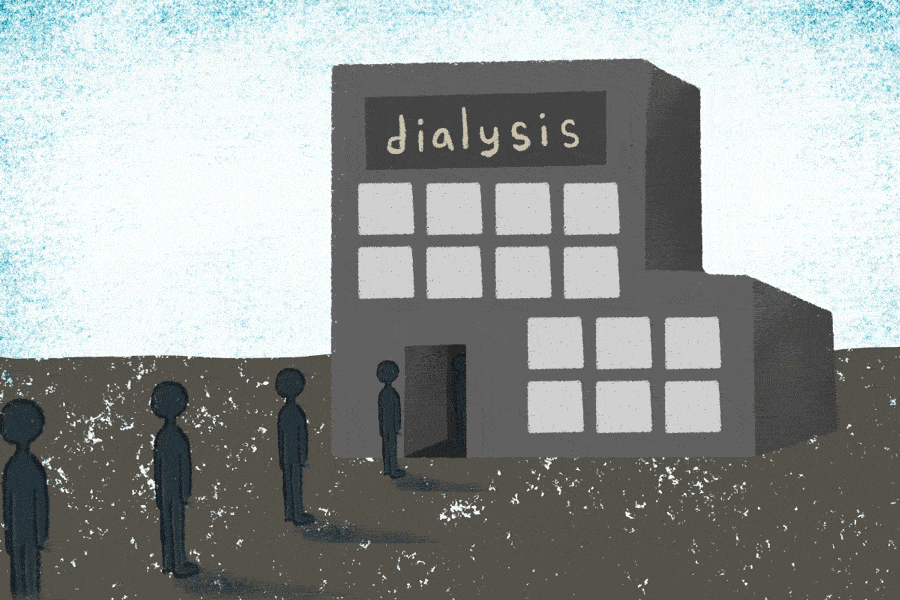As large, for-profit dialysis chains acquired more than 1,200 smaller providers across the U.S. from 1998 to 2010, they cut skilled medical staff, increased patient volumes, altered drug regimens and adopted other practices that hurt patient health, according to new research from Duke University’s Fuqua School of Business.
The researchers examined patient and facility data from the Centers for Medicare and Medicaid Services (CMS) and identified specific changes in practice after clinics were acquired by large firms. Highly skilled nurses were replaced with less-skilled technicians to reduce labor costs, patient loads per employee were increased by 11.7% and the number of patients treated at each dialysis station grew by 4.5%.
The Duke study has been peer-reviewed and posted online as a working draft by the Quarterly Journal of Economics.
Nearly half a million people in the U.S. are on dialysis to clean wastes from their blood that their failing kidneys can no longer filter. Almost 80% of dialysis providers in the U.S. are owned by large for-profit companies. The two largest publicly traded corporations, DaVita and Fresenius, own more than 60% of dialysis facilities and earn more than 90% of the industry’s revenue, the researchers note.
After acquisition by for-profit chains, patients were 4.2% more likely to be hospitalized in a given month, survival rates fell by as much as 2.9% and patients were 8.5% less likely to receive a life-saving kidney transplant or be placed on a transplant waiting list during their first year of dialysis.
“Our team of researchers thought we would be just as likely to find that as chains acquire independent facilities, they would implement best practices from the industry and then everything would improve – costs would improve, efficiency would improve and patient outcomes would improve,” said Ryan C. McDevitt, an associate professor of economics at Fuqua and an author of the study. “The flip side of that is, if you are more aggressive on maximizing profits, that may come at the expense of patient care and obviously the patient will suffer as a result.”
The data also show after large firms acquired independent dialysis providers, the clinics more than doubled (129% increase) their use of the anemia drug Epogen, which Medicare reimbursed at rates that profited the owners. When the government changed the reimbursement model for the drug in 2011 and its use was no longer profitable for dialysis centers, their Epogen use sharply declined.
Ongoing research by McDevitt and co-authors documents this decline, which they say leads to poorly managed anemia and more emergency blood transfusions. These procedures are both painful for patients and much costlier to Medicare and ultimately to taxpayers, McDevitt said.
With a small pool of providers controlling the U.S. dialysis market, firms face little pressure from competitors to improve patient care, McDevitt said. A third of the markets in the study offered just one provider. Even in areas with more than one dialysis center, patients are often encumbered by transportation challenges, additional health problems and other hurdles that make them unlikely to switch providers, the authors noted.
The absence of competition leaves regulation as the most feasible strategy to address these issues, McDevitt said.
“Medicare should work in concert with antitrust authorities to regulate these mergers,” he said. “Working in isolation, neither one is effective. Our current antitrust laws are fixated on local market competition, and with these acquisitions of independent facilities, any one facility itself is too small to have an impact on the local market concentration. They're under the radar of antitrust authorities but they have a significant effect on patient outcomes, which CMS cares about. So, having them work together would be the most effective approach.”
In addition to McDevitt, study authors included Benjamin Heebsh and James W. Roberts of Duke University and Paul J. Eliason of Brigham Young University. The Duke University Social Science Research Institute and the National Science Foundation (SES 1850736 and 1851615) funded the research.
